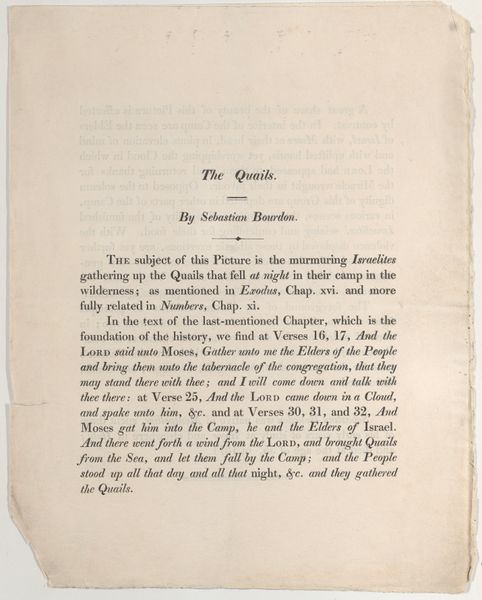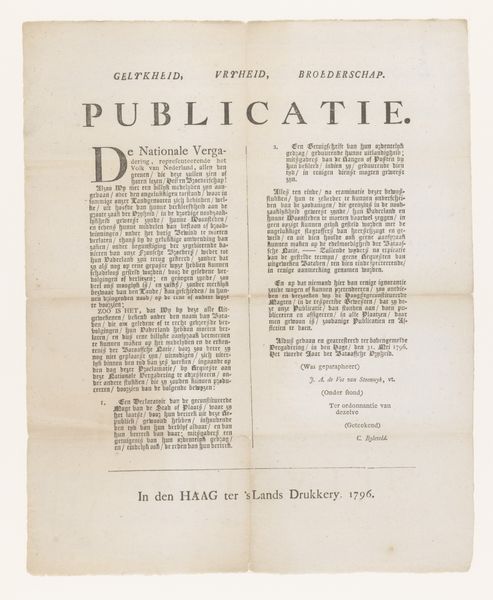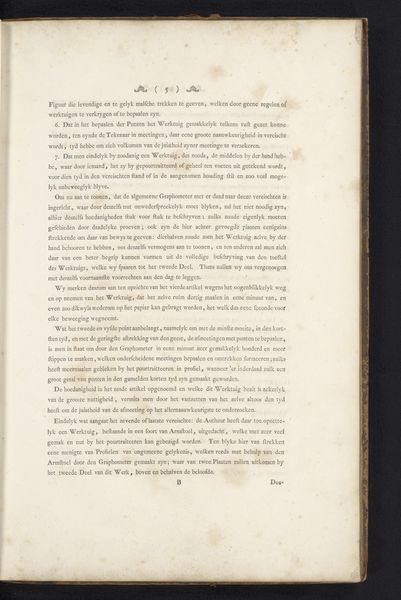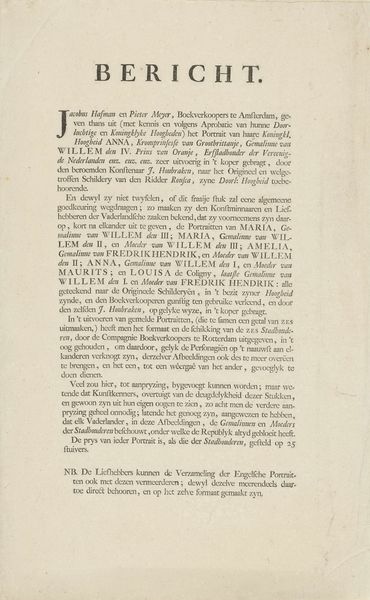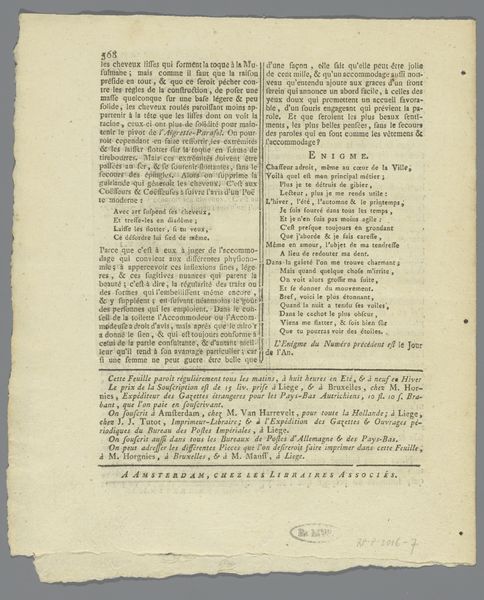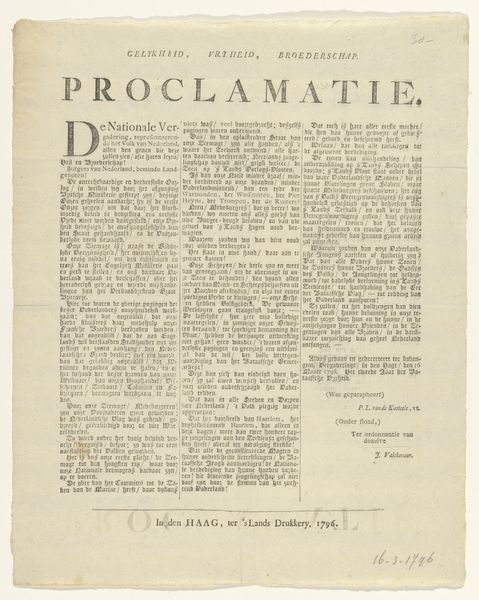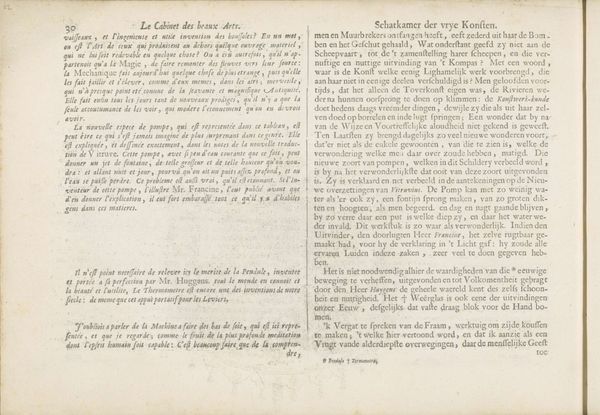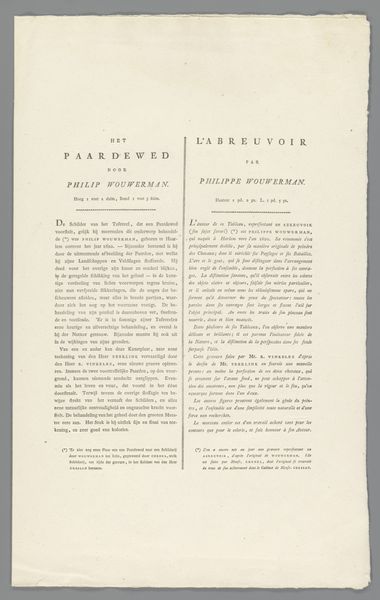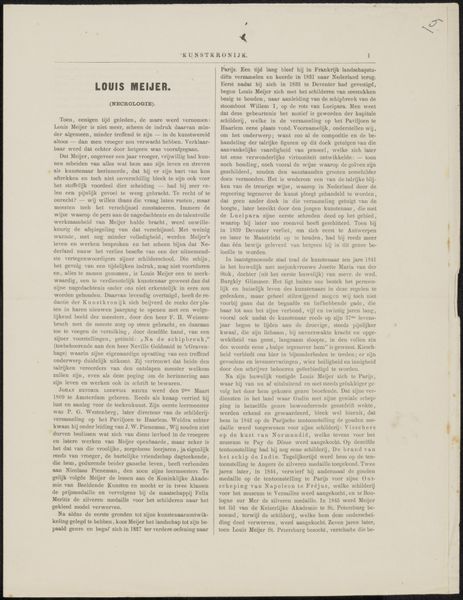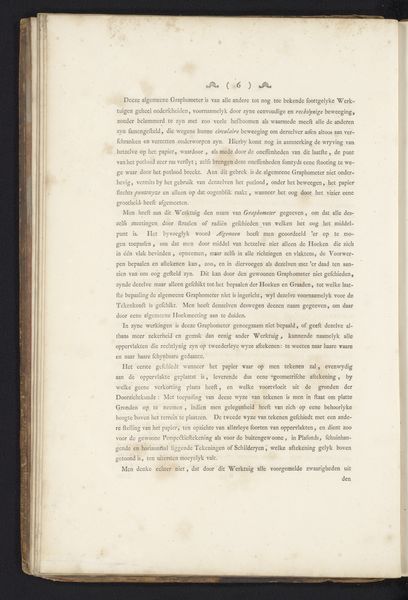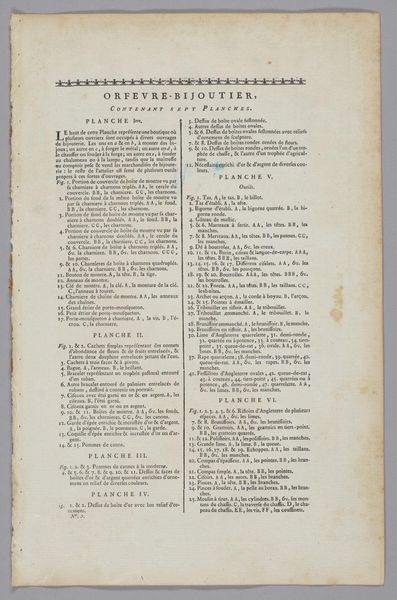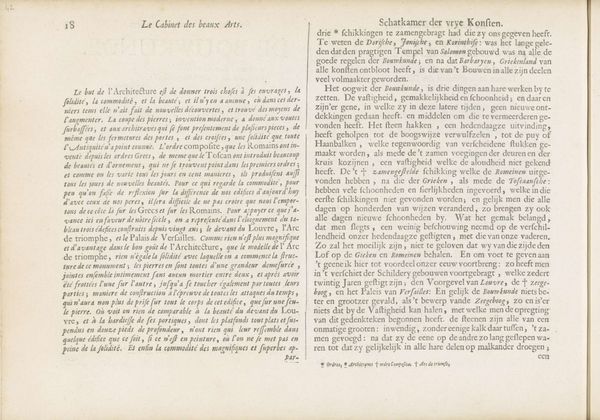
print, paper, typography
# print
#
paper
#
typography
Dimensions: height 444 mm, width 588 mm, width 445 mm
Copyright: Rijks Museum: Open Domain
Curator: Welcome. Before us we have a print from 1777, titled “Description of the Life of Claude Lorrain.” It is currently held at the Rijksmuseum. The artist’s name, unfortunately, is unknown. What are your first thoughts? Editor: Austere. I find myself contemplating the texture of the paper itself—the subtle impressions, the way the light catches. It's quite beautiful in its own right. It emphasizes form over content. Curator: Interesting, because I immediately reflect on the context in which this biography appears. Claude Lorrain, you know, occupies a rather precarious position. There is something deeply colonial in celebrating a landscape painter during this era. Editor: Ah, but look at the careful arrangement of the text! Observe the interplay of negative space with the serifs, and how they direct the eye. There is an argument to be made that the presentation *is* the artwork. Curator: I appreciate that interpretation, but can we ignore the way Claude’s romanticized visions arguably sanitized and erased the labor that made those landscapes profitable for European elites? It's impossible to disconnect such art from the historical forces that shaped both its production and reception. Editor: One cannot overlook the details of production either: the precision afforded through typography and printmaking. A printed document allowed widespread circulation and readership—granting a life, so to speak, to Claude beyond the canvas. A means for democratizing an artist’s biography? Curator: Perhaps, but this biography isn’t simply about celebration, is it? It constructs and solidifies the myth of the artist. It implicitly tells us what is worth seeing, what stories are worth telling. That act is laden with social and political ramifications. Editor: So while you read the printed text through its intersectional histories, I see lines and shapes constructing the artwork. Curator: And perhaps those very lines you see delineate an argument I attempt to deconstruct. They converge and depart—much like we did just now.
Comments
No comments
Be the first to comment and join the conversation on the ultimate creative platform.

